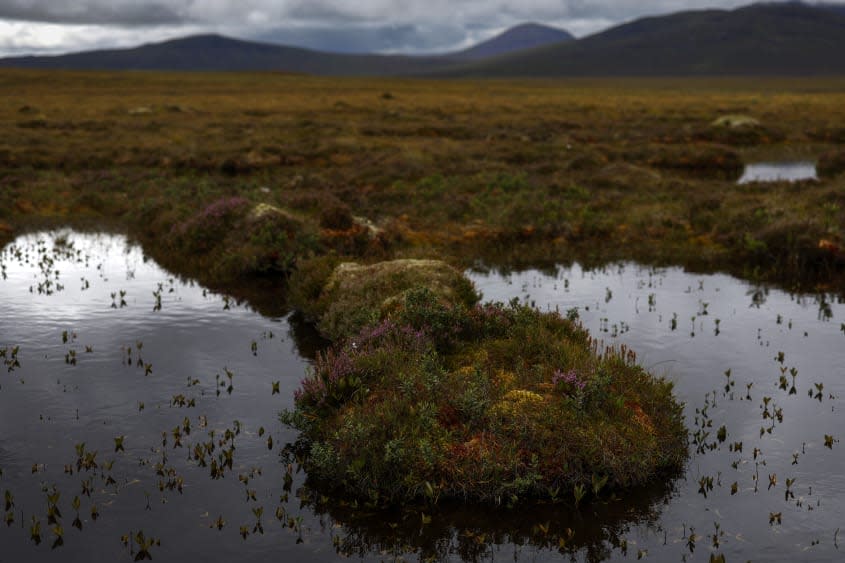Devika Rao, Staff writer
Mon, August 28, 2023

Flow Country peatland in Scotland Jeff J. Mitchell / Getty Images
The number and intensity of wildfires have increased due to climate change and are only expected to worsen over time. Along with ruining air quality and causing destruction, wildfires also play a part in worsening climate change in general. This is because the burning damages peatlands and permafrost peatlands, which could have catastrophic outcomes.
What are peatlands?
Peatlands are "terrestrial wetland ecosystems in which waterlogged conditions prevent plant material from fully decomposing," per the International Peatland Society. They are located on every continent and climate and because they are made up of organic matter have trapped lots of carbon dioxide. Many peatlands have been frozen over thousands of years in permafrost with "nearly 20% of the permafrost areas, store[ing] nearly 50% of soil carbon of the permafrost ecosystem, equal to nearly 10% of the global terrestrial soil carbon pool," according to Phys.org.
"Peatlands are one of the world's largest terrestrial carbon stores, because they've been taking in carbon for thousands and thousands of years and storing it there," Lorna Harris, of the Wildlife Conservation Society of Canada, told CBC. Frozen peatlands in particular are holding on to almost 40 billion tons of carbon within them, which is a ticking time bomb of emissions due to climate change, according to ScienceDaily.
How are they in danger?
Climate change has put permafrost peatlands in danger as the temperature rises and wildfires become more prevalent. Humans have also been draining peatland to convert for agricultural or forestry purposes. "When El Niño brings dry weather to the region, fires in the region can go out of control for several weeks or more, with lots of peat burning," Loretta Mickley, a wildfire expert, told The Harvard Gazette.
The warmer temperatures have also caused "zombie fires," which are underground fires that "don't die easily," according to The Conversation. These fires "do not flame but burn more slowly and have the tendency to spread deep into the ground and spread laterally." The Arctic is also warming at an accelerated rate compared to the rest of the world, and as the fires move northward, "peat soils rich in dead plant material burn at an accelerated rate."
"The burning peat also removes the layer insulating permafrost, the region's frozen carbon-rich soil," The Conversation continued. Both permafrost and peatland are becoming increasingly vulnerable to wildfires. "The chemical stability of permafrost peatlands carbon pool have closely related to the environmental disturbance factors," remarked Dr. Gao Chuanyu, the co-author of a 2023 study on how climate disturbances impact the stability of peatland carbon pools, told Phys.org.
What happens if they are destroyed?
The destruction of peatlands can cause billions of tons of carbon to be released into the atmosphere, worsening the already intensifying climate crisis. Also, "fires can thaw permafrost, beginning a cascade of microbial processes that may also generate greenhouse gases. The biggest problem is "that carbon will take at least another 1,000 years to go back into the peat," Mickley explained.
"So you get the carbon loss from the fire and you get the carbon lost from the permafrost thaw and then a more rapid change in the land cover," Harris remarked. "If we don't restore that ecosystem to at least make it carbon neutral and ideally make it a carbon sink again, it is a source of greenhouse gas emissions to the atmosphere."
No comments:
Post a Comment